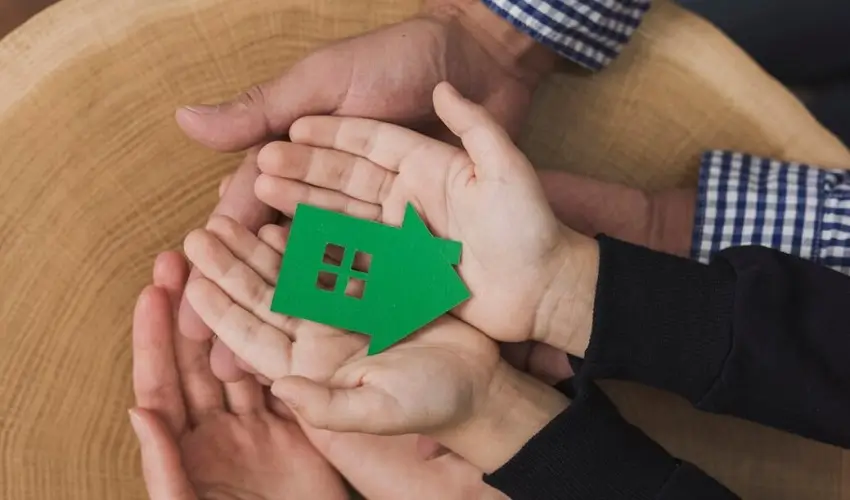
The True Cost of a Home Equity Line of Credit
How much does a HELOC cost beyond the interest rate you see? You’re not alone. A home equity line of credit is a flexible, low-cost way to borrow, especially compared to personal loans or credit cards. But, like most financial products, there’s more to it than meets the eye. From fees and variable interest rates to long-term repayment, understanding the full picture helps you make a smarter decision. A home equity line of credit can be helpful, but knowing what you’ll pay is key to using it responsibly.
Interest Rates Aren’t Always Fixed
One of the most important things about a HELOC is that the interest rate is typically variable. That means it can increase or decrease over time based on market trends. While the initial rate might be lower than what you’d see with a personal loan or credit card, it may not stay that way for long. If interest rates rise, so will your monthly payments possibly by more than you expect.
Some lenders offer a fixed-rate option on part or all of your balance, which can help bring more stability. But if you stick with the variable rate, it’s smart to build room in your budget if rates increase during your draw or repayment period.
Upfront Costs and Fees Can Vary
While some lenders advertise “no closing costs, that’s not always true. Many HELOCs come with fees some charged upfront, others rolled into the balance. These include application fees, appraisal costs, title searches, and legal documentation. You might also see annual fees or early termination charges if you close the credit line sooner than the lender allows.
Depending on your lender and loan amount, these costs can range from a few hundred to over a thousand dollars. Ask for a fee breakdown before applying so there are no surprises later. Even if the lender waives some costs, they could come back as penalties if you don’t keep the account open for a few years.
You’ll Pay Interest Only At First
Many HELOCs only require interest payments on what you borrow during the draw period (usually 5 to 10 years). That sounds like a great deal, and in some ways, it is. You can access cash as needed and keep your payments low. But it also means your balance doesn’t go down unless you make extra payments.
Once the draw period ends, you enter the repayment phase. This is when things shift. Now, you’ll be paying off the principal and interest, which can cause your monthly payment to rise significantly. If you’re unprepared, that jump could feel like a financial shock.
Potential Long-Term Financial Impact
Because you’re using your home as collateral, the stakes are high. If you fall behind on payments, you risk foreclosure, like with your mortgage. And while a HELOC can be a smart way to manage major expenses, it also has the potential to add more debt than you planned for if you don’t have a strategy in place.
Using a HELOC to fund short-term wants like vacations or shopping can lead to long-term regret. On the other hand, using it for value-adding renovations, debt consolidation, or education expenses may be a more strategic move. Consider how much you’ll pay, including interest over time, before drawing from your credit line.
Tips to Keep Costs Manageable
It’s important to plan to make the most of your HELOC without stretching your finances. Before using the funds, only borrow what you truly need and have a repayment plan in mind. If possible, start paying down the principal during the draw period so you’re not hit with higher payments later.
It also helps to shop around. Before choosing one, compare different lenders’ interest rates, terms, and fee structures. A transparent provider like AmeriSave can help you understand exactly what you’re getting into so you can make an informed decision without pressure.
A HELOC can be a smart, flexible solution when used with purpose, but it’s not free money. The true cost depends on how you manage it, from fluctuating interest rates to hidden fees. Understanding each stage of the loan and planning accordingly ensures you stay in control of your finances while still tapping into the value of your home. When approached with care, a HELOC can be a helpful tool in reaching your financial goals without unexpected costs along the way.
FAQs About Home Equity Line of Credit (HELOC)
A HELOC can be worth it if you need flexible access to funds for home improvements, debt consolidation, or emergencies. Since you only pay interest on what you borrow, it may be more cost-effective than a lump-sum loan. However, it’s important to consider interest rate fluctuations and the risk of using your home as collateral.
A HELOC is a revolving line of credit that lets you borrow against your home’s equity. Similar to a credit card, you can draw funds as needed up to a set limit during the “draw period,” then repay it over time. Your home serves as collateral, which usually allows for lower interest rates compared to unsecured loans.
Most lenders require you to have at least 15%–20% equity in your home to qualify. Typically, they allow you to borrow up to 75%–85% of your home’s appraised value, minus the balance you still owe on your mortgage.
Closing costs for home equity loans in 2025 generally range between 2% and 5% of the loan amount. These costs may include appraisal fees, title search, application fees, and recording charges. Some lenders offer low- or no-closing-cost HELOCs, but they may come with higher interest rates.
HELOC rates in 2025 vary by lender, credit score, and market conditions. On average, they range from 6% to 10%. Since most HELOCs have variable interest rates, your monthly payments may rise or fall depending on changes in the prime rate.